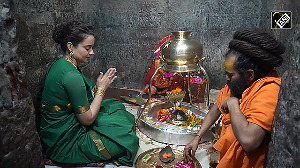Airlines in India had better hold on hard to their pilots. If the International Air Transport Association's latest warning to the world's airlines is anything to go by, the industry will soon need 17,000 new pilots annually due to expected growth of the industry and retirements.
Till recently, this was primarily an Indian problem, where the growth of new carriers and fleet had given rise to a situation where even public sector airlines had begun to eye pilots and crew from overseas.
This is now however expected to be a global problem, so salaries of pilots in India may have to rise even further, if existing staff and talent is to be retained.
"This can severely hit the Indian carriers as expat pilots who have left their countries may prefer to return," said a DGCA official, adding that working conditions in India are not particularly enticing.
A number of expat pilots have also found Indian airports more challenging to work in as incidents that occur on the ground are more common than those in the air. "We have anticipated this kind of shortage," says SpiceJet director Ajay Singh.
His airline is picking up graduates straight from college, sending them to flying schools in the US and to Emirates in Dubai for their first officer licence.
"As a result, we have built up quite a pool," he says. But, industry sources say that many of the other carriers -- who now have large numbers of foreign pilots -- will have to bend over backwards to retain them.
In many countries like the US, pilots' retirement age is currently 60. "Increasing the retirement age to 65 will help but it can't be the only solution. It is time to ring the warning bell. We must re-think pilot training and qualification to further improve safety and increase training capacity," said Giovanni Bisignani, IATA Director General and CEO, in a press release on the subject.
In India, the retirement age for pilots is already 65, though carriers like Air India and Indian retire pilots at 58. Hiring of expat pilots had also been permitted by DGCA in view of the shortage in India.
Already, according to a KPMG study on the subject, India's airlines will need approximately 13,800 by 2012 (the demand projected for the next year is 7,628 and despite ministry efforts, the problem is yet to go away.
Although the DGCA has been trying to get many of them working, only 17 of the 40-odd flying schools are in operational status.
The ministry had roped in the Aero Club of India to identify a number of private flying schools, several of which had fallen into disuse. 10-12 of these schools are to be given trainer aircraft and some assistance to revive themselves.
As yet, largely unheard of in India, IATA has been encouraging multi-crew pilot licensing (MPL) training, a subject of great controversy globally. Such training will allow trainees to put in less hours of flying and more in a simulator.
Currently, pilots put in 200 hours on the aircraft and then get type-rated. IATA has been advocating MPL, arguing that it also makes better use of simulator technology. Europe was among the first regions to adopt MPL and Australia and China are moving ahead with its implementation.
In China, in fact, IATA is working with the government to develop a syllabus and keep multi-crew training part of the regulations.







 © 2025
© 2025